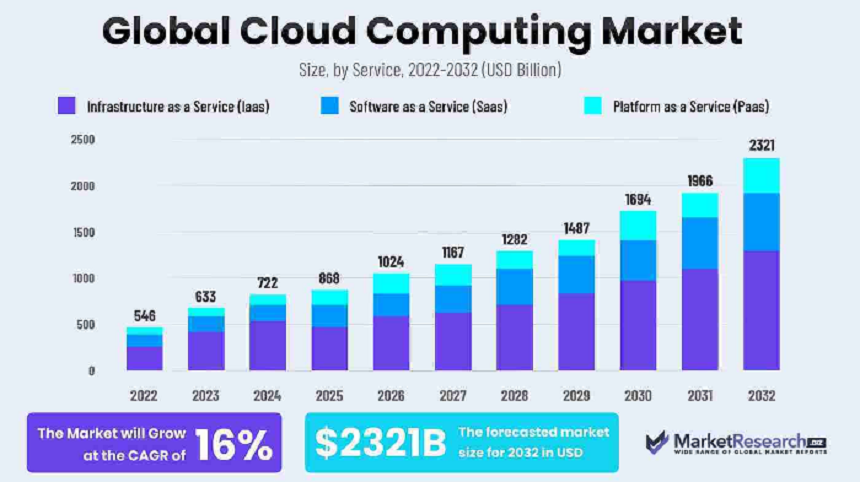Cloud technology is now one of the most business-changing forces of the day, and the insurance sector is no different. Essentially, the cloud provides insurers with a major benefit: scalability. Cloud use in insurance has followed a predictable course—initial resistance, slow uptake, and now a turning point. Although the technology is established, the way insurers view and utilize it remains in flux.
Initially, the C-suite understood cloud adoption for insurance as merely a cost-reduction strategy—an effective means to streamline operations and decrease dependence on physical infrastructure. But as insurers have begun probing the full power of the cloud, they're beginning to grasp that its impact extends far beyond cost savings—there's so much more going on.

The Cloud as a Catalyst for Operational Profitability
Let's get to the numbers, which speak volumes. A new McKinsey analysis estimates that by 2030, cloud take-up could produce an EBITDA run-rate effect of $70 billion to $110 billion in the insurance industry alone. To put this into perspective, EBITDA (Earnings Before Interest, Taxes, Depreciation, and Amortization) tracks a company's underlying profitability—basically, how well it runs without including outside expenses like taxes or maintenance.
This is where the cloud really comes into its own for insurers. It's not merely an upgrade in technology—it's a driver of operating efficiency, transforming efficient processes into actual dollars. Indeed, the adoption of the cloud could contribute 43-70% to the overall EBITDA impact across industries as a whole, highlighting the powerful financial advantages to insurers. It means quicker settlement of claims, more sophisticated analysis of data, and better interactions with customers—while reducing cost associated with operating traditional infrastructure.
And as you consider the matter, it's not so much saving the insurers money but creating new money as well. It's that change which one cannot afford to overlook in a competitive age.
Cloud Strategy: Driving the Engine of Insurance Innovation
From its humble beginning as an enabler of operations, the cloud has now advanced to becoming a driver of disruption innovation for the insurance sector. It's the environment where next-generation technologies such as AI-driven underwriting, real-time risk modeling, and dynamic pricing models flourish. What's distinctive is the way the cloud redefine scalability—not just process data, but also enable insurers to prototype, refine, and roll out game-changing technologies at unprecedented speeds, making out-of-the-box innovations viable and scalable across global markets.
The insurance market is no longer controlled by a handful of old, well-established companies. Nowadays, collaborations among old-fashioned insurers and insurtech companies are redefining the scene, and the cloud lies at the center of it all. It's not merely about enabling emerging IT infrastructure anymore; the cloud has emerged as a primary driver of widespread disruption across the industry.
Global Cloud Computing Market for SaaS and PaaS
Here are some top examples of how cloud strategies are driving innovation:
Driving Agility in an Era of Rapid Change
Agility has emerged as the hallmark of competitiveness for the insurance sector. Gone are the days of slow, clunky processes—marked by lengthy policy updates, hardware reliance, and convoluted data migrations—being replaced by unprecedented speed and agility through cloud technology.
For instance, American Family Insurance's advantages of cloud computing with Amazon Web Services (AWS) in 2022 accelerated its cloud migration, allowing the company to create and roll out new insurance products, including usage-based insurance (UBI) programs, faster. The strategic action gave American Family the ability to innovate faster and improve its digital capabilities.
Additionally, the scalability of the cloud enables insurers to pilot and implement solutions at a national or global level without the enormous initial investment that once accompanied international growth.
Cloud Adoption: Facilitating Global Scalability for High-Value Products
Scaling globally is no longer a luxury for insurers alone, but for insurers as well. advantages of cloud computing technology gives insurers the infrastructure to easily expand their products across borders.
Consider Chubb, for instance. The organization developed a cloud-native platform to globalize its cyber insurance coverage. Through the handling of huge volumes of local regulations in real-time, Chubb was able to launch region-defined cyber covers across several continents at will. This global expansion has made Chubb the pioneer in solving the emerging threats of the current digital-first economy.
Quantum Computing in Insurance: The Next Innovation Frontier
Another key advantages of cloud computing is its ability to prepare insurers for the quantum computing age. Forward-thinking insurers are experimenting with quantum-ready environments, offered by cloud platforms, to experiment with quantum-safe encryption algorithms. In addition to improving security, quantum computing has revolutionary potential to address intricate issues in insurance, including portfolio optimization, risk modeling, and fraud detection, in ways that regular computers simply cannot compete with.
What is Quantum Computing?
Quantum computing is a quantum leap in processing capability that utilizes quantum bits (qubits) rather than binary bits. Due to quantum effects such as superposition (where qubits can signify 1 and 0 simultaneously) and entanglement (where qubits are connected no matter what distance is between them), quantum computers have the ability to process enormous amounts of data concurrently. This would enable them to solve problems requiring years or even centuries to solve by traditional computers.
Why Quantum Computing Will Power Insurance Innovation
Quantum computing will transform insurance by allowing quicker, more precise solutions for intricate processes:
Quicker Risk Modeling and Pricing: Conventional risk analysis is based on complex models that demand huge computational power. Quantum computers can handle millions of variables and scenarios simultaneously, allowing real-time risk modeling, better pricing, and customized po


